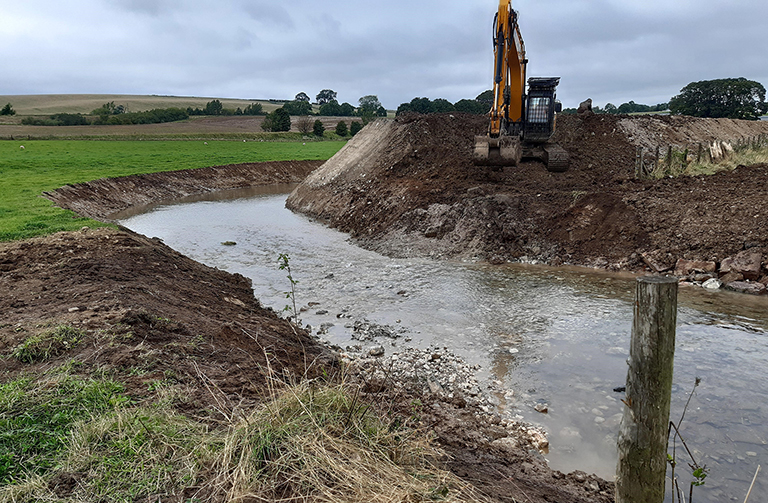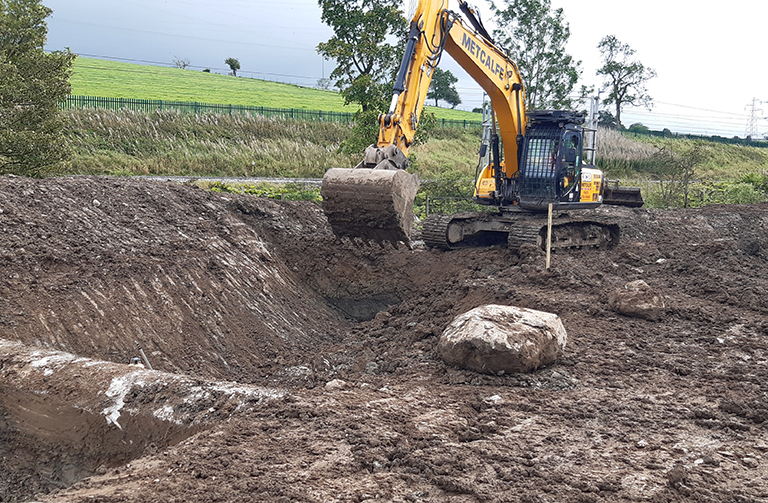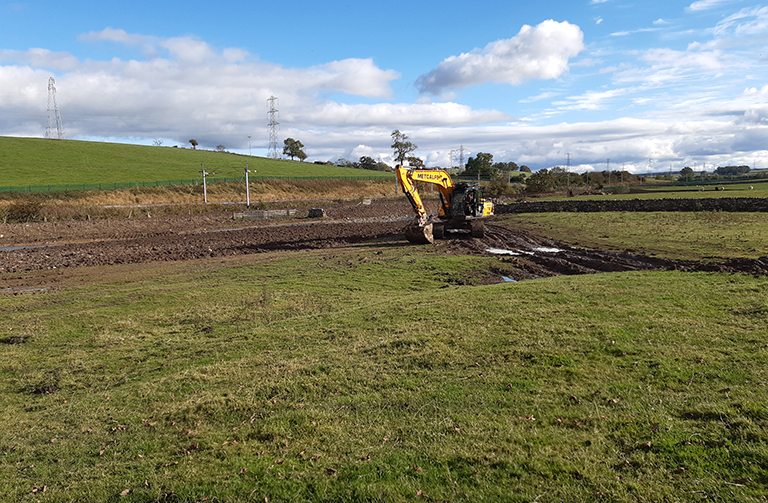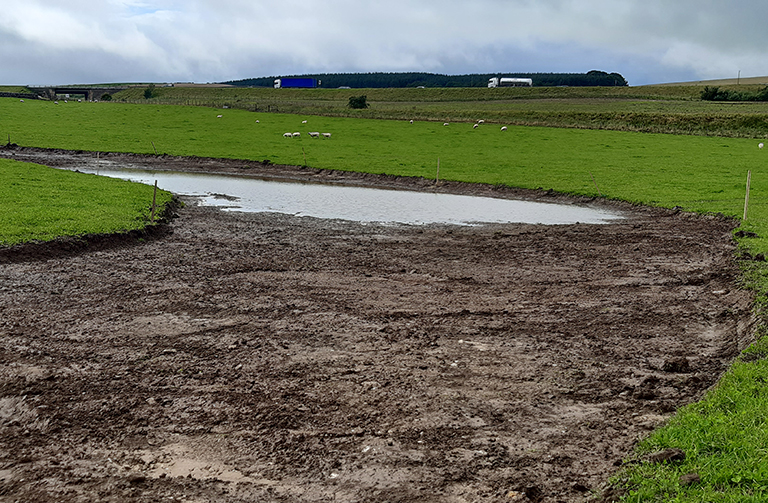Thrimby river restoration
Part of project: River restoration
Beside the West Coast main line at Thrimby lies a stretch of the River Leith that doesn’t function as a natural river should. Historically straightened, it doesn’t provide good conditions for wildlife to thrive or help protect the surrounding land and buildings from flooding.
The river flows at the foot of the embankment of a major railway line, a little too close for comfort for the 46 passenger trains and seven freight trains that go past every 24 hours – carrying up to 18,500 tonnes of medical supplies, bananas, pasta, loo roll and other essentials over the England-Scotland border. People depend on this service to run all year round without interruption.
Restoring natural river processes could be the answer.
We are working in partnership with the Environment Agency, Natural England, the landowner, Viscount Lowther Trust, tenant farmer, Matthew Blair, Blair Farming Ltd and Network Rail on a major river restoration scheme to safeguard this vital transport route, address local flooding concerns and create valuable wildlife habitat.
Designed by environmental consultancy, AquaUoS with work carried out following Covid-19 guidelines by a local contractor, Metcalfe Plant Hire, work has begun to cut a new 1km meandering or ‘wiggling’ river channel that flows away from the railway line. The new river will be 33% longer than the previously straightened river.
Other features found in natural rivers and on floodplains are also being introduced to slow the flow and/or store more water during times of flood and drought.
These features will help to directly reduce flood peaks at the farm itself, as well as downstream flood risk by storing more flood water here, further upstream.
The meanders and in-stream features such as riffles will provide essential habitat for fish and insects. Moving the river away from the railway embankment will protect it from erosion and the effects of flooding.
Lev Dahl, River Restoration Manager adds:
This is a really exciting project that is going to provide a huge range of benefits – increasing habitat, protecting the railway and reducing flood risk. As the project matures, it will also provide homes for a range of birds and mammal species. All of these benefits are set within a working sheep and beef farm and provides a great example of how food production, nature conservation and the transport sector can work hand in hand.
Here’s a short film by Network Rail showing some of the progress to date:
https://network-rail.wistia.com/medias/i6hzyt339s
This major partnership project is being delivered as part of the award-winning Cumbria River Restoration Programme, which is one of the biggest and most successful restoration programmes in the UK. It is one of many being delivered across Cumbria, which aims to safeguard our protected areas, protect downstream communities, as well as boost diversity and create a more diverse range of habitats for fish to thrive. Led by the Environment Agency with Natural England, Eden, South Cumbria and West Cumbria Rivers Trusts. RSPB and the National Trust.





